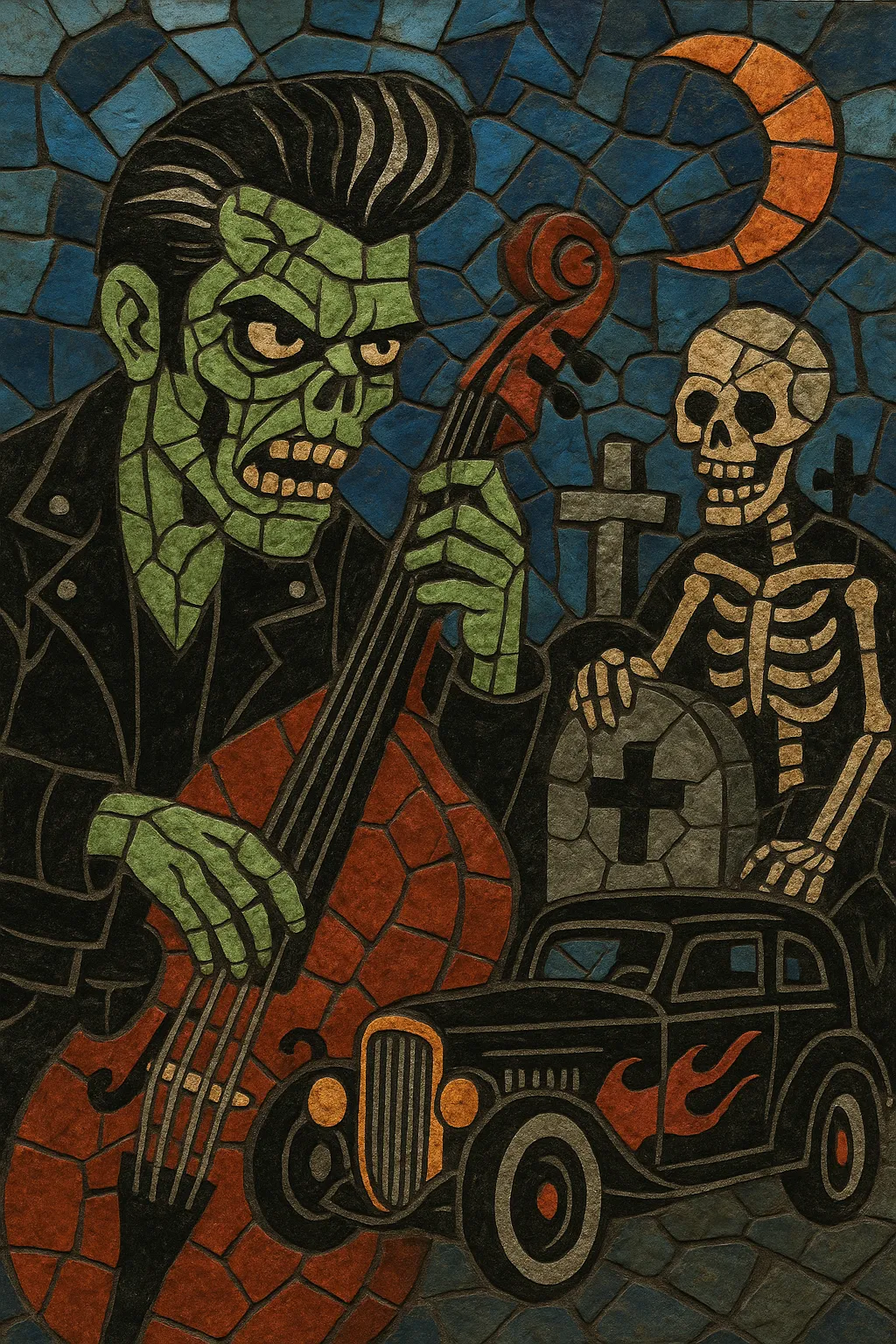
Psychobilly is a high-octane fusion of 1950s rockabilly and late‑1970s punk rock, spiked with horror, sci‑fi, and B‑movie aesthetics. It is defined by twangy, reverb‑drenched guitars, an aggressively slapped upright (double) bass, and breakneck drums that push songs toward punk tempos.
The style’s sound balances the swing and I‑IV‑V DNA of rockabilly with punk’s distortion, attitude, and shout‑along choruses. Lyrics typically revel in campy macabre imagery—monsters, hot rods, graveyards, radioactive romance—delivered with a snarling, tongue‑in‑cheek theatricality. Onstage, pompadours, quiffs, tattoos, coffin imagery, and the signature “wrecking” pit-dance complete a subcultural identity that is both retro and transgressive.
While rooted in the United Kingdom scene of the early 1980s, psychobilly rapidly spread across Europe and the United States, cultivating a global circuit of dedicated bands, labels, and festivals.
Psychobilly emerged from the collision of 1950s rockabilly revivalism and the first wave of punk. The Cramps in the United States pioneered a wild, horror‑soaked take on rockabilly in the late 1970s, while the United Kingdom provided the scene infrastructure and the term’s consolidation. London’s The Meteors, formed in 1980, are widely credited as the first self‑identified psychobilly band, codifying the genre’s sonic markers—slap‑bass propulsion, twang‑and‑tremolo guitars, and punk energy—along with macabre humor.
Through venues like the Klub Foot at the Clarendon Hotel in Hammersmith, a tight UK scene coalesced. Bands such as Guana Batz, Demented Are Go, The Sting‑Rays, and Frenzy helped define the look and sound: towering quiffs, upright basses used almost percussively, and frantic pits known as “wrecking.” European groups including Batmobile (Netherlands) and Mad Sin (Germany) spread the style across the continent.
The 1990s introduced wider crossover and international growth. In the US, Reverend Horton Heat bridged rockabilly, punk, and alt‑rock circuits, while Danish act Nekromantix pushed a darker, more theatrical sound. The 2000s saw Tiger Army bring psychobilly aesthetics to punk and alternative festival audiences, cementing the genre’s visibility.
A robust global network of festivals—such as Spain’s Psychobilly Meeting (Pineda de Mar) and Germany’s Satanic Stomp—sustains the culture. New waves of bands continue to refresh the formula, blending surf, garage, goth‑tinged atmospheres, and even metal edges while preserving the core: slap‑bass locomotion, haunted humor, and retro‑modern swagger.

